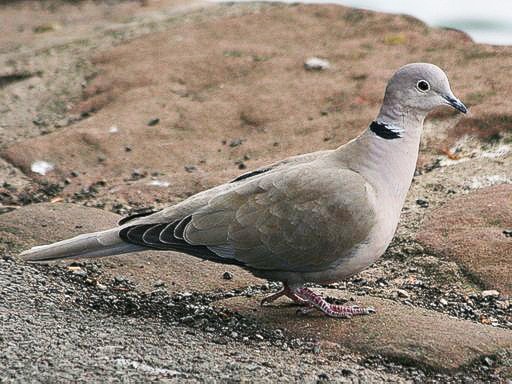You were really helpful with my gardening questions, and I have more, but I want to ask about those bl**dy doves outside my window. What, you mean the ones with the mellifluous song?
Does “mellifluous” mean “starts at five in the morning”? If so then yeah, those ones. Ah, Streptopelia decaocto!
There’s no need to be rude. No; that’s the formal name of the Eurasian collared dove, the bird to which you’re referring.
I’ve lived around here for a long time, but only seem to have noticed them in the last decade or so. Where did they come from? One theory is that they were introduced to this region by a couple who let loose several of them at their wedding, with the descendants of the nuptial birds now populating the area.
Is this true? No.
So what happened? Streptopelia decaocto is native to warm, temperate, and sub-tropical Asia. However, the species began expanding outward from its Asian base, first with a very successful European tour through the 1950s. In 1974 fewer than 50 of the birds escaped captivity in the Bahamas, and soon spread to Florida. Deciding they liked the United States, the birds began to spread out.
Where to? The lower 48 states. Then, since Canadian Border Services has yet to find a way to stop birds crossing the border, they made their way into Canada. They arrived in this area around 2005.
It seems much longer ago than that. Yes, well, years of being awakened by them at five in the morning will do that to you.
So they just looked north from the Bahamas, thought “Nice piece of property; we’ll take it!” and that was that? Pretty much. Remember back in the 1980s and ’90s, when scores of people cashed out on their homes in the Lower Mainland and moved to the Okanagan? And at first the locals were all “Isn’t that nice!” only to find that they were getting priced out of the market and couldn’t get tables at their favourite restaurants? It’s kind of like that.
So are these birds pushing out the native populations? The Eurasian collared dove is classified as an invasive species in North America, and is a notably aggressive bird. So in some cases, yes.
Is there any way to get rid of them? See “aggressive bird” above. They have proven remarkably resilient in their preferred areas, which are close to human habitation where food supplies are plentiful. Natural predators can have a limited effect, but there is very little that humans can do. Despite the birds’ proclivity for wandering about, seemingly aimlessly, on roads, they are almost impossible to hit with a car.
You sound as if you’re speaking from experience here. I certainly am.
So what is it with that cooing? If you listen to it carefully, you will notice that Streptopelia decaocto has a distinct “coo-COO-coo” cry, repeated six times for a total of 18. The word decaocto is ancient Greek for “18”, and Greek mythology has it that the name derives from a servant who complained about being paid only 18 pieces of coin a year. For her temerity, the gods changed her into a dove that still cries mournfully over this injustice.
That’s very poetic; but is it true? Who knows? But it will give you something to think about the next time those bl**dy doves wake you up at five in the morning. . . .
